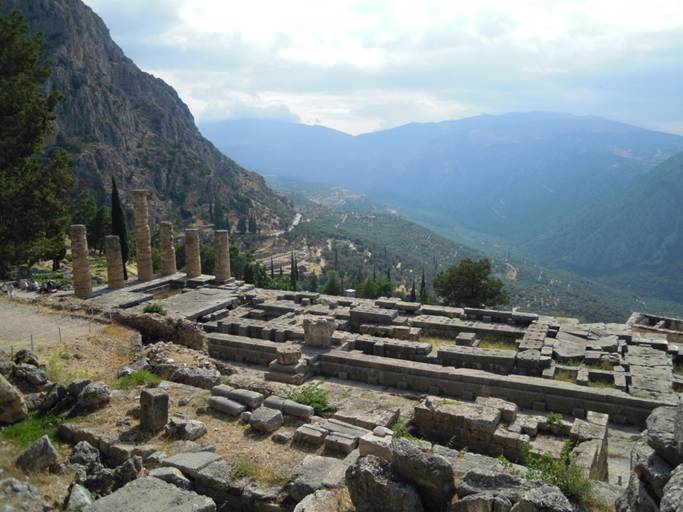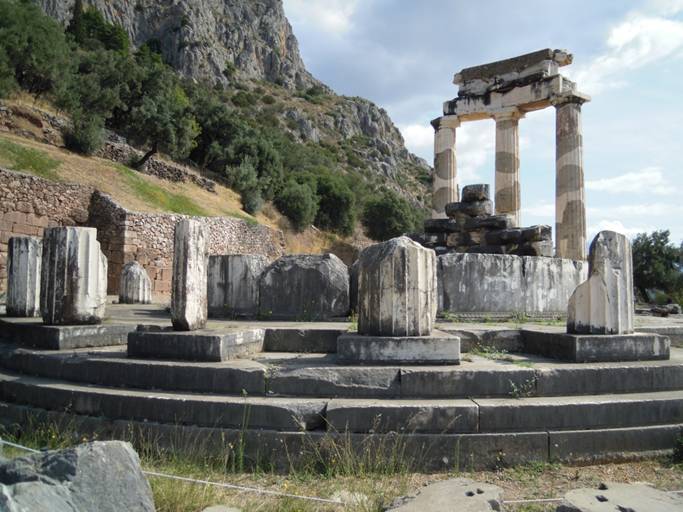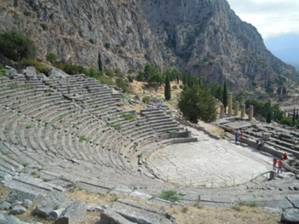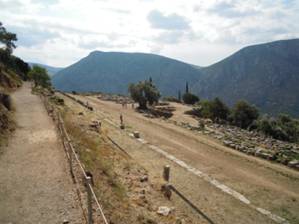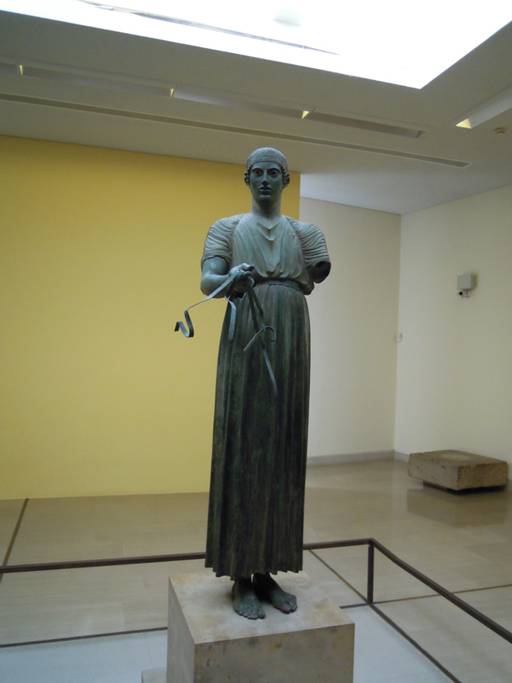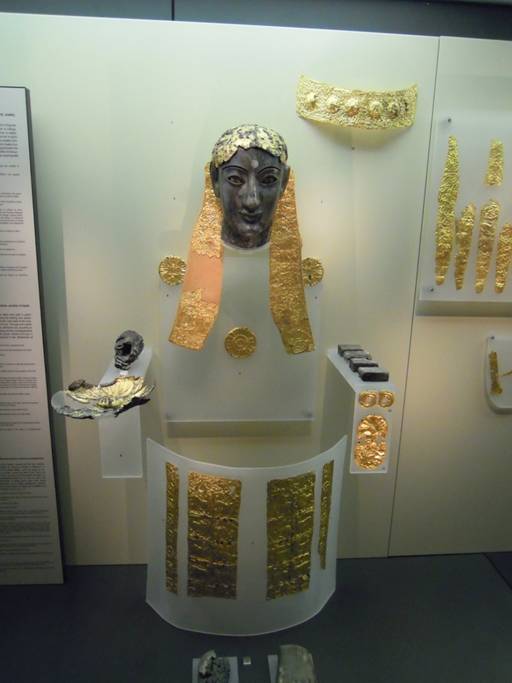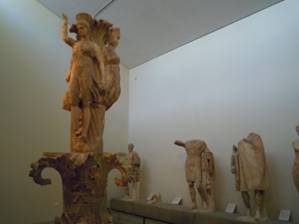Delphi

|
Itea is the closest port to the ancient city of
Delphi. Delphi was built on the southern slopes of Parnassus (altitude
500-700 meters), situated so it could not be seen from the sea. This
provided some protection from pirates who raided the coast. The area is
also prone to earthquakes which caused openings in the ground to let fumes
escape. Supposedly the fumes caused a shepherd to be possessed and utter
things which later became true. This was the first oracle delivery. Delphi was first inhabited 1600-1100 BC as shown by a few
traces of houses, tombs, statues and jewelry found. 110-800 BC not much
happened as Greece was under raids. Then from 800-400 BC the sanctuary
evolves into an important religious and intellectual center for Greece.
The monuments were stated and statues outnumbered the population. Roman
Emperor Nero seized 500 statues in 67 AD from Delphi. During this time
the Oracles were consulted for many this especially settling new colonies and
selecting leaders. The fame of the Oracles spread and other non-Greeks came for
advice such as King Midas and Egyptian pharaohs. Needless to say this
brought the city great wealth and dragged it into four sacred wars, first
during 590-580 BC, second 448-446, third 356-346 and the fourth 339-338.
It survived all with some outside help at times. When Alexander came into
power the world changed and Delphi lost authority but not glory as leaders sent
more statues and offering to propagandize themselves. In 279 the Galatians hordes attacked but the gods intervened
and sent rocks down on them. Actually they were repelled by the
Aetolieans who took over the sanctuary. They were expelled by the Romans
and Delphi became independent in 86 BC. Roman Consul Syllas stripped the
it of all precious metals and three years later looted by Maedans who burnt
down the temple of Apollo. IT still had over 3,000 statues and artwork in
170 AD. Christianity became stronger in the area and Constantine the
Great transferred a lot of offerings to Constantinople. Roman Emperor
Julian (360-363 AD) tried to revive the old God worshipping. In 394
Theodosius the Great closed all the sanctuaries and banned the pagan
religion. A Christian community moved in until 7th century
when the city was abandoned. It was covered by landslides and the town of
Kastri was built. In 1891 the French School of Archaeology move the city
and began excavations.
Temple of Apollo. On this site there were five
temples. According to tradition the first was a hut made from
laurel leaves. The second made from wax and feathers and the third from
bronze. Debris from two other temples has been found. Trophonius
and Agamedes built the fourth in 7th c. BC and was destroyed by fire
in 548 BC. A new bigger one was built with contributions from many
towns and foreign leaders. This was destroyed by an earthquake in 383
BC. The current temple was built by architects Spintharos, Xenodoros and
Agathon with contributions from all over Greece.
Temple of Athena. The first temple was built in Doric
order (6 x 12 columns) in the 7th century BC. It was destroyed
and a second was built in 500 B. Most of it was destroyed around in the 4th
century BC. The rest was destroyed in a mountain slide in 1905.
The Theater. Built in the 4th century BC
and reconstructed in the 2nd century. It has 35 rows of seats
and can hold 5,000 people.
Athenian Treasury. The only restored treasury on the
site. It was built either to commemorate the Marathon Battle or to
commemorate the establishment of Democracy in Athens.
The gymnasium. Used by athletes for
training. It had a covered section for training in bad weather as well as
baths fed from the nearby Castalia spring. The Romans added hot water
baths.
The Charioteer. Made in bronze, dedicated to Apollo by
Polyzalos, tyrant of Gela in Sicily, in commemoration of his victory in the
chariot race in the Pythian Games in 478 or 474 BC. It was preserved in
the ground covered during a landslide.
A man’s head from a gold and ivory statue representing
Apollo.
Statue called the Dancers. Total height was 13 meters. |
